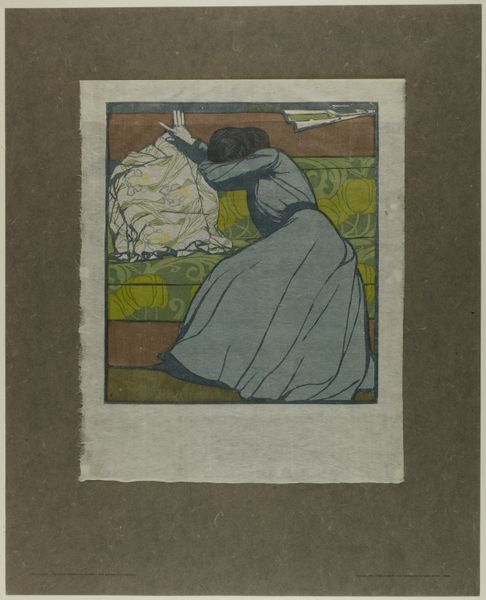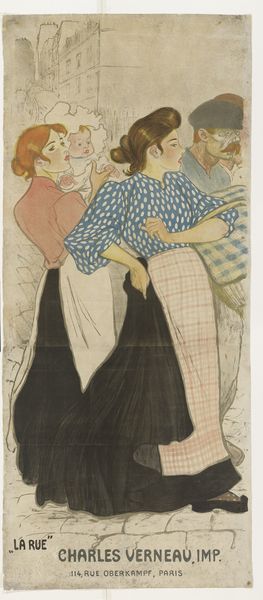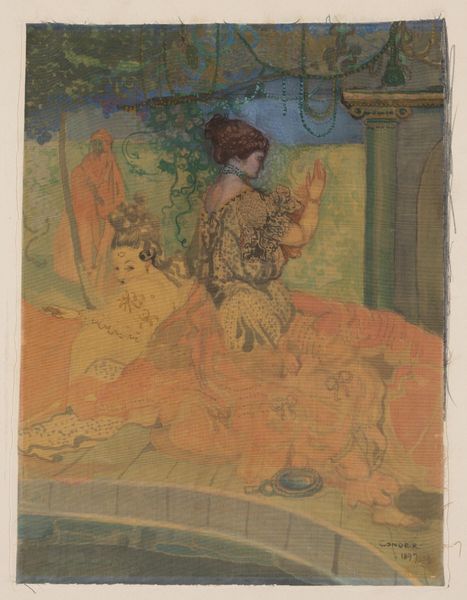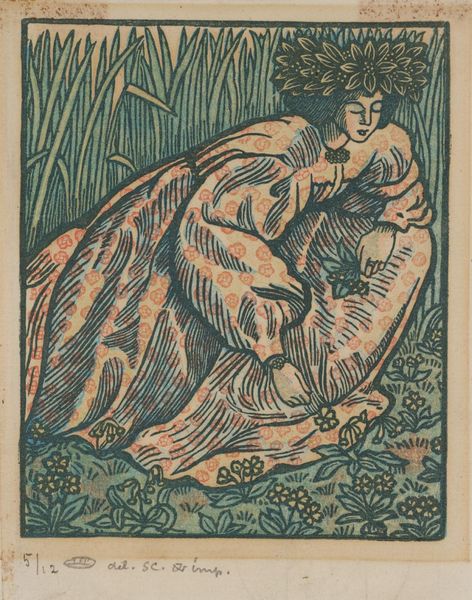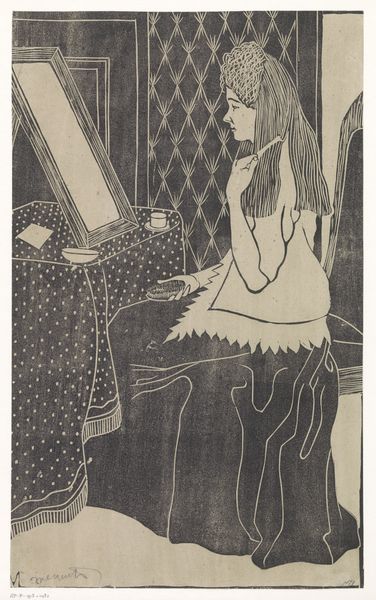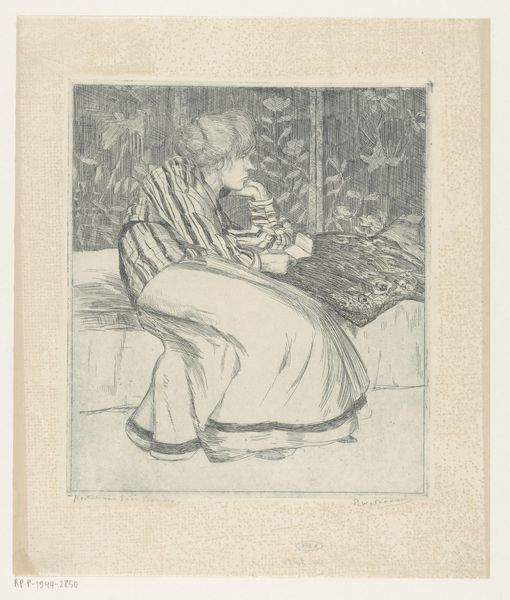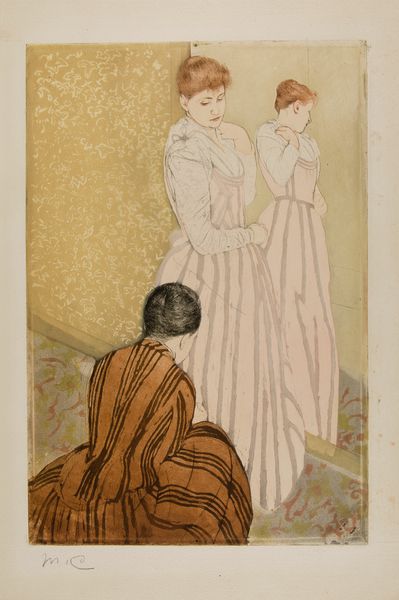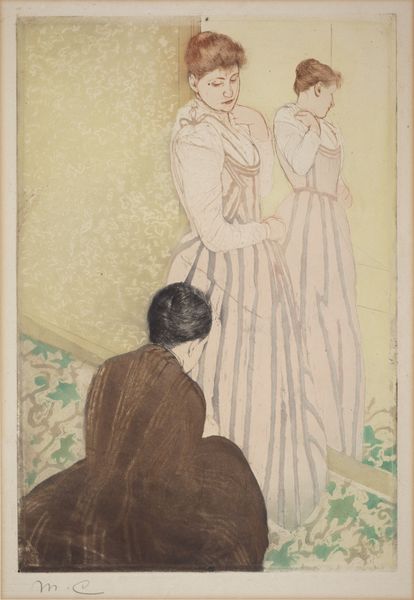
#
aged paper
#
toned paper
# print
#
handmade artwork painting
#
personal sketchbook
#
linocut print
#
sketchbook drawing
#
watercolour bleed
#
watercolour illustration
#
sketchbook art
#
watercolor
Dimensions: image: 28.7 x 25.9 cm (11 5/16 x 10 3/16 in.) sheet: 38.7 x 31 cm (15 1/4 x 12 3/16 in.)
Copyright: National Gallery of Art: CC0 1.0
Curator: Here we have Max Kurzweil's "The Cushion," created around 1903. The print utilizes watercolor and linocut techniques to present an intimate, if melancholic, scene. Editor: It's striking how the subdued color palette emphasizes a profound sense of weariness. The subject's posture speaks volumes, doesn’t it? A drooping figure leaning heavily onto a cushion. Curator: Indeed. Given the context of early 20th-century Vienna, we can consider this in relation to the societal constraints and expectations placed on women. Is this a depiction of quiet despair in the face of stifling roles? Editor: Perhaps. But look closely at the composition itself. The repetition of floral motifs across the fabrics and wallpaper almost traps the figure. The eye is drawn to the interplay of textures and patterns which might speak to something beyond pure social commentary. Curator: I see your point about the patterns, however, one must consider the socio-political moment, with growing feminist discourse grappling with issues of identity and autonomy. The artwork perhaps offers us a window into the psychological burden placed upon women of the time. Is this weariness the exhaustion born from the limitations of women? Editor: Possibly. The formal elements don't necessarily exclude a feminist interpretation; they complicate it, I think. The weight of her figure juxtaposed against the flatness of the printmaking adds a layer of tension. Is that a sign of structural imprisonment— the structural pressure exerted by societal norms as perceived and felt in the aesthetic expression? Curator: Absolutely, and if we bring in queer theory, is it possible to perceive even more hidden elements, repressed identities in this woman's pose and her physical imprisonment? The limited colors also speaks to an artist withholding key aesthetic markers of identity. Editor: Yes, the formal and sociopolitical blend and offer more robust avenues for investigation. The somber atmosphere speaks not just to external constraints but an internal state. The interplay between figure and setting gives insight into both repression and resistance. Curator: Looking through that intersectional lens allows for richer, multi-layered analyses. Thank you. Editor: It also helps to show that focusing on composition isn't merely about the surface, but offers an avenue to think about more complex experiences. Thank you, too.
Comments
No comments
Be the first to comment and join the conversation on the ultimate creative platform.
